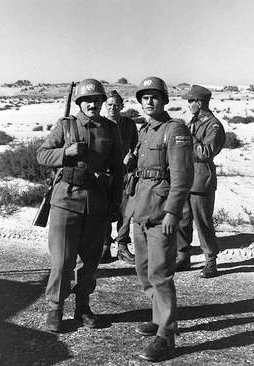History is a window to our past, paving the path for reflection and learning. One significant event that holds numerous lessons is the conclusion of the Suez Crisis, which reached a pivotal point on November 6, 1956. On this day, the United Nations Emergency Force (UNEF) came into existence, playing a major role in resolving the crisis.
The Suez Crisis: An Overview
The Suez Crisis, also known as the Second Arab-Israeli War, was a divisive event that unfolded from July to November 1956. It involved Egypt on one side and a coalition of Britain, France, and Israel on the other. The specific trigger was the nationalization of the Suez Canal by Egypt’s President Nasser on July 26, intending to use its revenues to finance the Aswan Dam’s construction after the US and UK had withdrawn their funding for the project.
Reaction to this move was swift and potent. In late October, Israel invaded the Egyptian Sinai, soon followed by British and French military interventions. The crisis quickly spiraled, causing global tensions amidst Cold War-era alliances and rivalries.

The UN’s Role and November 6, 1956
Amid widespread denunciation of the tripartite aggression, the United Nations (UN), under Secretary-General Dag Hammarskjöld and Canadian Minister of External Affairs Lester B. Pearson, proposed the creation of the UN Emergency Force (UNEF) to secure and supervise a ceasefire between the feuding nations.
This proposal would come to fruition on November 6, 1956, marking the establishment of UNEF. That day, the UN General Assembly adopted resolution 1001, effectively creating the first peacekeeping force and establishing a new, proactive role for the UN in managing international crises.
Interesting Facts Suitable for Older Kids
1. The Suez Canal, at the heart of the crisis, is one of the world’s most important waterways. It connects the Mediterranean Sea with the Red Sea, allowing cargo ships to pass between Europe and Asia without having to navigate around Africa.
2. The UN Emergency Force was the first of its kind. It wore blue helmets to identify themselves and maintain neutrality. That’s why UN peacekeepers are also known as “Blue Helmets.”
Educational Activities for Older Kids
1. Kids can draw two maps, one before and one after the Suez Crisis, to understand the event’s geographical implications.
2. To gain a deeper insight into the event, kids can create a timeline charting the crisis from start to finish, including the establishment of UNEF on November 6, 1956.
Conclusion
The resolution of the Suez Crisis on November 6, 1956, via the creation of the UNEF, highlights diplomatic maneuvering’s power in staving off escalating conflicts. It also marks a decisive point in how international disputes were handled, setting a precedent for the UN’s more active role in conflict resolution.
References
1. Kyle, K. (2003). Suez: Britain’s End of Empire in the Middle East. I.B. Tauris & Co. Ltd.
2. Pearson, L.B. (1973). Mike: The Memoirs of the Right Honourable Lester B. Pearson. University of Toronto Press.
3. Urquhart, B. (1987). Hammarskjold. Alfred A. Knopf.
4. United Nations, (1956). Resolution 1001 (ES-I): The United Nations Emergency Force. UN General Assembly.







What do you think?
Show comments / Leave a comment